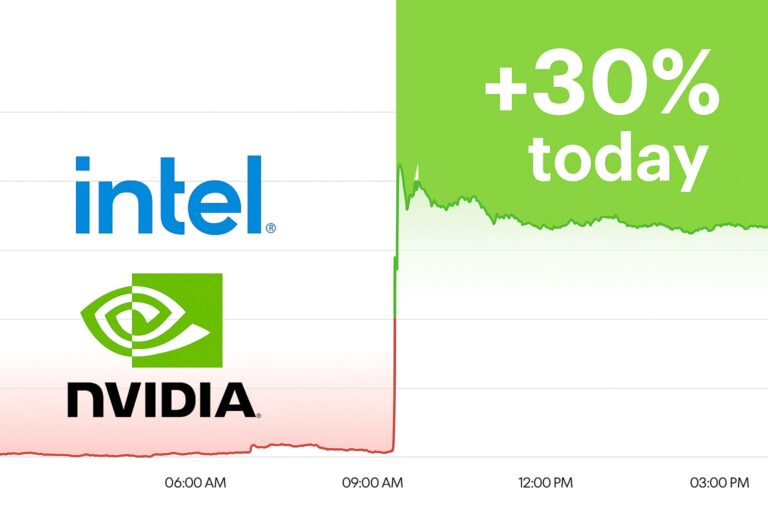A Step-by-Step Guide to Investing in Stocks and ETFs on Wealthsimple for Beginners
The days when investing was exclusively for financial experts are over. Today, anyone with a phone or laptop and an internet connection can start investing. In Canada, one of the most popular platforms for investing is Wealthsimple. In this guide, we’ll explore what this service is, how to sign up, which accounts to open, how to invest in stocks and ETFs, and what first steps a beginner should take.
What is Wealthsimple?
Wealthsimple is a Canadian fintech platform that offers investment and financial services in a simple and clear format. The service launched in 2014 and quickly gained popularity due to its commission-free stock purchases, user-friendly interface, and the option to automate investments.
Key features of Wealthsimple include:
- Commission-free buying of stocks and ETFs (via Wealthsimple Trade).
- Automated investing in pre-built portfolios (Wealthsimple Invest).
- Access to cryptocurrencies.
- Tax-efficient investment accounts: TFSA, RRSP, RESP.
The platform is convenient for beginners, as you don’t need deep financial knowledge to get started.
Alternative Platforms
There are other investment services as well. For example, Questrade offers a wider selection of ETFs and stocks in the U.S. and Canada and has more advanced functionality. Its advantage is access to many tools and flexible options for active traders, but the downside is a more complex interface for beginners and the presence of commissions.
Another option is Interactive Brokers, which allows you to invest in international markets with low commissions. However, it is better suited for experienced investors due to the platform’s complexity.
It’s also worth mentioning Webull. The platform provides commission-free access to stocks, ETFs, options, and even cryptocurrencies. Its advantage is a wide range of tools for analysis and active trading, but for beginners, Webull can seem too complicated. The platform launched in Canada in 2024.
Robinhood became famous for its simplicity and the original “zero-commission” model in the U.S.. It’s a good fit for beginners but has a limited set of features for professional investors. The main drawback is that Robinhood doesn’t offer access to certain account types important in Canada (like TFSA or RRSP) and only operates in the U.S. market.
Another option is SoFi Invest. The platform allows you to buy stocks, ETFs, and even cryptocurrencies. Its advantage is that it’s integrated with other SoFi financial services (like loans, banking, and insurance), which is convenient for those who want to have “everything in one place”. The downside is that its tools are quite basic, and the platform is more focused on U.S. retail users than on active traders.
In summary, Wealthsimple stands out among these platforms for its simplicity, mobility, and integration with the Canadian tax system (TFSA, RRSP), but it offers fewer tools and less global reach.
More on Registration
Signing up on Wealthsimple only takes a few minutes. To do so, you need to:
- Go to the official website wealthsimple.com or download the app.
- Create an account by entering basic information (name, email, password).
- Verify your identity—you’ll usually need to take a photo of your passport or driver’s license.
- Connect your bank account to be able to fund your investment balance.
The process is simple, similar to opening an online bank account. Identity verification takes the longest, but even that usually doesn’t take more than a few hours.

Account Opening: What Are the Options?
Wealthsimple offers several types of accounts. The most popular are:
TFSA (Tax-Free Savings Account)
This is one of the most beneficial investment tools in Canada. All income (dividends, profits from selling stocks or ETFs) is not taxed. This means the growth of your investments stays entirely in your pocket.
RRSP (Registered Retirement Savings Plan)
This account allows you to save money for retirement. All contributions reduce your taxable income, meaning you pay less in taxes now, but tax will apply in the future when you withdraw the money.
RESP (Registered Education Savings Plan)
This account is for investing in a child’s future education. The Canadian government even adds bonuses to contributions.
Personal (Standard Investment Account)
If you have maxed out your TFSA or RRSP limits, you can use this account. Standard taxes apply here.
For beginners, the best option is to start with a TFSA, as it’s the simplest and most tax-efficient.
Portfolio Options: Do You Choose Yourself or Trust the Platform?
Wealthsimple has two main approaches to investing:
Wealthsimple Trade (Self-Directed Investing)
Here, you can buy stocks and ETFs without commissions. This is a good option for those who want to build their own portfolio and learn about the stock market. For example, you can buy stocks of major companies (Apple, Microsoft) or ETFs that cover an entire market (like the S&P 500). The purchase of U.S. stocks happens in USD, so you will lose a percentage on the CAD > USD exchange. You can also open a USD account, but it costs $10 CAD per month. This option is suitable for those who want more control over their investments.
Wealthsimple Invest (Automated Investing)
Here, you don’t need to choose stocks or ETFs yourself. You simply answer a few questions (about your income, risk tolerance, and goals), and the platform creates a ready-made portfolio for you. This is convenient for beginners who want everything to work automatically. The portfolio is composed of various ETFs (Canada, U.S., international markets, bonds).
Which option is better? If you want to learn and make your own decisions, choose Trade. If simplicity and stability are more important to you, start with Invest.
What First Steps Should a Beginner Take?
Here are a few simple steps to get started with confidence:
- Determine your budget —decide how much you are willing to invest each month. Even $50 a month makes sense.
- Choose an account —it’s best to start with a TFSA.
- Define your strategy —either self-directed via Trade or automated via Invest.
- Start with ETFs —they are less risky than individual stocks and provide diversification.
- Set up automatic contributions —regular investments work better than trying to “time the market”.
Tips for Beginners
- Don’t invest everything at once. Start with small amounts and gradually increase your contributions.
- Diversify. Don’t buy just one stock, even if it seems reliable. ETFs will help spread the risk.
- Think long-term. The market always fluctuates. It’s important to stay invested even during downturns.
- Don’t follow the hype. Popular stocks or cryptocurrencies can drop sharply. Stick to your strategy.
- Keep learning. Read books and blogs about investing, watch educational videos, but avoid “get-rich-quick schemes”.
Conclusion
Wealthsimple makes investing accessible to everyone. With its simple interface, no commissions, and the choice between self-directed and automated investing, this platform is ideal for beginners.
Remember: the main thing isn’t to perfectly time the market or choose the best stock. The most important thing is to start, invest regularly, and maintain a long-term strategy. If you’re ready to take the first step, open an account on Wealthsimple today.
Here are my real investment results on Wealthsimple.
Read in Ukrainian: “Інвестиції в акції та ETF на Wealthsimple: покроковий гід для новачків“







